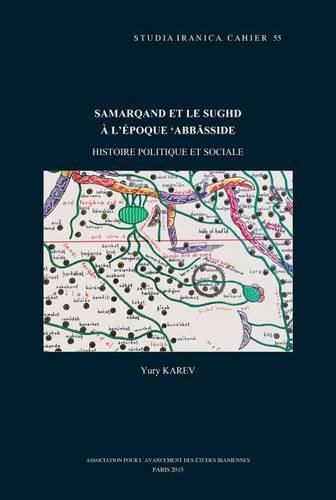Readings Newsletter
Become a Readings Member to make your shopping experience even easier.
Sign in or sign up for free!
You’re not far away from qualifying for FREE standard shipping within Australia
You’ve qualified for FREE standard shipping within Australia
The cart is loading…






A partir de l'epoque abbasside (750-820), les vastes territoires situes
au-dela du fleuve Amu Darya (le Mawara'annahr), conquis par les generaux
umayyades durant la premiere moitie du VIIIe siecle, entrent
definitivement dans l'aire culturelle de l'islam. L'analyse croisee des
sources medievales arabes, persanes et chinoises, completees par les
donnees de manuscrits inedits, ainsi que les derniers resultats livres
par les fouilles archeologiques de Samarqand permettent d'etablir une
chronologie fine de cette periode charniere de l'histoire de l'Asie
centrale. Sous cet eclairage nouveau sont examines les processus
complexes et irreversibles qui ont abouti a un changement du cadre
politique et religieux, a la transformation des elites sogdiennes et
musulmanes, a l'evolution du systeme etatique de controle des pays
frontaliers, dans un contexte de confrontations et de relations
diplomatiques entre le califat, l'empire chinois des Tang et les Turcs.
During the Abbasid period (750-820), the vast territories beyond the Amu
Darya river (the Mawara'annahr), conquered by the Umayyad generals in
the first half of the eighth century, entered definitively into the
cultural sphere of Islam. The comparative analysis of medieval Arabic,
Persian, and Chinese sources, supplemented by materials from unpublished
manuscripts, as well as the latest results yielded by archaeological
excavations at Samarkand, have made it possible to establish a
fine-grained chronology of this turning point in the history of Central
Asia. Examined in this new light are complex and irreversible processes
that resulted in a changed political and religious fabric,
transformations of the Sogdian and Muslim elite, and the evolution of
the state’s system of controlling territories on its borders, within a
context of confrontations and diplomatic relations between the
caliphate, the Tang empire in China, and the Turks.
$9.00 standard shipping within Australia
FREE standard shipping within Australia for orders over $100.00
Express & International shipping calculated at checkout
A partir de l'epoque abbasside (750-820), les vastes territoires situes
au-dela du fleuve Amu Darya (le Mawara'annahr), conquis par les generaux
umayyades durant la premiere moitie du VIIIe siecle, entrent
definitivement dans l'aire culturelle de l'islam. L'analyse croisee des
sources medievales arabes, persanes et chinoises, completees par les
donnees de manuscrits inedits, ainsi que les derniers resultats livres
par les fouilles archeologiques de Samarqand permettent d'etablir une
chronologie fine de cette periode charniere de l'histoire de l'Asie
centrale. Sous cet eclairage nouveau sont examines les processus
complexes et irreversibles qui ont abouti a un changement du cadre
politique et religieux, a la transformation des elites sogdiennes et
musulmanes, a l'evolution du systeme etatique de controle des pays
frontaliers, dans un contexte de confrontations et de relations
diplomatiques entre le califat, l'empire chinois des Tang et les Turcs.
During the Abbasid period (750-820), the vast territories beyond the Amu
Darya river (the Mawara'annahr), conquered by the Umayyad generals in
the first half of the eighth century, entered definitively into the
cultural sphere of Islam. The comparative analysis of medieval Arabic,
Persian, and Chinese sources, supplemented by materials from unpublished
manuscripts, as well as the latest results yielded by archaeological
excavations at Samarkand, have made it possible to establish a
fine-grained chronology of this turning point in the history of Central
Asia. Examined in this new light are complex and irreversible processes
that resulted in a changed political and religious fabric,
transformations of the Sogdian and Muslim elite, and the evolution of
the state’s system of controlling territories on its borders, within a
context of confrontations and diplomatic relations between the
caliphate, the Tang empire in China, and the Turks.